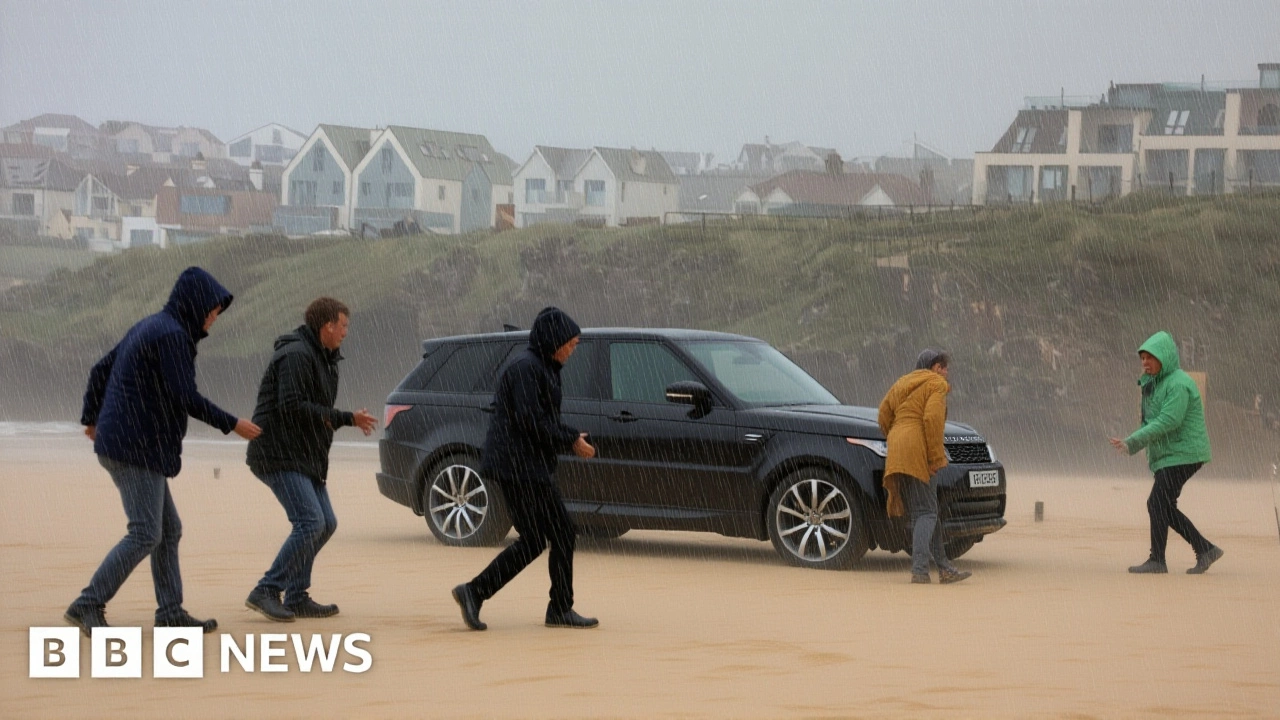Storm Amy – Latest Updates and Safety Guide
When talking about Storm Amy, a deep‑low pressure system that slammed the UK with torrential rain, fierce winds and widespread flooding in early October 2025. Also known as Amy Storm, it forced road closures, knocked out power for millions and stretched emergency services to the limit. The Storm Amy event highlighted how quickly weather can turn dangerous for anyone outdoors, especially golfers, commuters and holidaymakers.
One of the most noticeable forces was the wind, with gusts exceeding 80 mph in coastal counties. Wind in this context drives rain inland, creates hazardous driving conditions and can uproot trees that block streets. Because wind shapes the storm’s power, understanding its patterns helps predict when and where damage will hit hardest.
Key Impacts of Storm Amy
Another major player was flooding, which affected river valleys, low‑lying towns and even some golf courses in the north‑west. Flooding creates water‑logged grounds that make playing a round impossible and damage infrastructure for days. The water levels rose quickly, turning quiet streets into rivers and prompting local councils to issue evacuation notices.
Effective emergency response, coordinated by local fire services, police and the Environment Agency, proved crucial. Emergency response reduces injuries by directing people to safe zones, clearing debris, and restoring power where possible. Volunteers set up temporary shelters, while weather apps sent real‑time alerts that saved lives.
Storm Amy also sparked conversations about climate impact. Scientists point to a warming climate as a factor that intensifies low‑pressure systems, meaning future storms could be even stronger. Recognising this link helps policymakers push for better flood defenses and greener urban planning.
So, what should you do if another storm rolls your way? First, check local forecasts regularly – the Met Office updates wind speeds and rain intensity every hour during severe weather. Second, keep an emergency kit ready: water, non‑perishable food, a flashlight, batteries and any prescription meds. Third, secure outdoor items like garden furniture or golf carts; loose objects become projectiles in high winds.
If you’re heading out to play golf, remember the course conditions can change in minutes. Wet fairways slow the ball, and strong gusts can bend clubs, affecting swing accuracy. Many clubs close temporarily when wind exceeds safe limits, so call ahead before you travel. Knowing when to stay home can keep you safe and your equipment intact.
Travel plans also need tweaking during storms. Roads near coastal cliffs are prone to landslides, and rail services may be suspended due to track flooding. Allow extra time, carry a charged phone, and have a backup route. If you’re stuck, local councils often provide shelter locations on their websites.
All these points—wind, flooding, emergency response, climate impact, and practical safety steps—form a clear picture of why Storm Amy matters beyond a single weather event. Below you’ll find a curated collection of articles that dive deeper into related topics, from protecting your golf equipment in wet conditions to understanding how extreme weather reshapes our daily lives. Keep reading to arm yourself with the knowledge you need for the next storm.

Storm Amy forces NI schools to shut at noon; delayed alerts spark outrage
Storm Amy forced all NI schools in amber‑warning areas to close at noon on Oct 3, 2025. Delayed emails sparked criticism from MLA Jon Burrows, who calls for a faster, multi‑channel alert system.